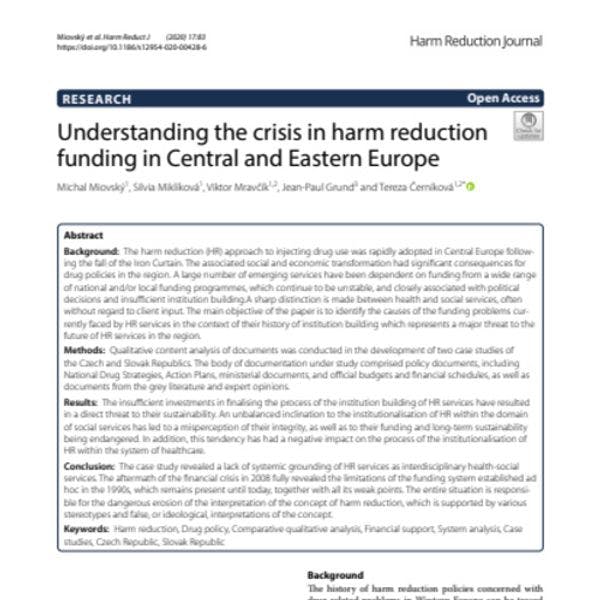Harm Reduction Journal
Comprendre la crise du financement de la réduction des risques en Europe Centrale et de l’Est
Miovský et al. suggèrent que la durabilité des services de réductions des risques dans la région a été négativement affectée par un sous-investissement dans leur institutionnalisation. Pour en savoir plus, en anglais, veuillez lire les informations ci-dessous.
By Miovský et al. / Harm Reduction Journal
The history of harm reduction policies concerned with drug-related problems in Western Europe can be traced back to as early as the first half of the 1970s, while in Australia and in the USA the first signs of the HIV epidemics spurred the first needle exchanges and subsequent harm reduction efforts. Initially, harm reduction advocates faced an uphill battle but in the European Union the hill has become much less steep over the years, with “consensus replacing controversy”. In 2018, there were 335 needle and syringe programmes in the USA, organised by a rather well-developed grassroots harm reduction movement. The result of the federal government changing its position on needle and syringe pro- grammes, leading to a partial repeal of the ban on federal funding for this service, is a recent increase in needle and syringe programmes in the USA.
Although the use of federal funds to purchase sterile needles or syringes remains prohibited, federal funds are permitted to be allocated to other aspects of programmes that are needed to keepthem in operation. While not completely without contro- versy, in Australia and the EU harm reduction has largely been mainstreamed, while it has gained a steadily growing foothold in Latin America and many Asian countries. In 2018, 86 countries worldwide had implemented some form of needle and syringe programme and 86 countries had implemented opioid substitution treatment.
